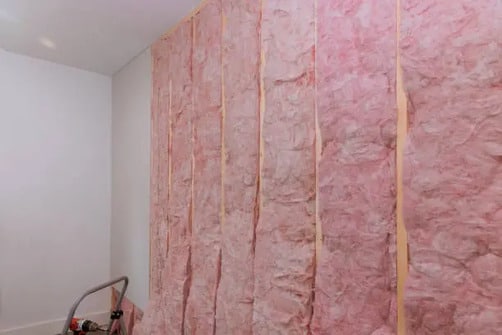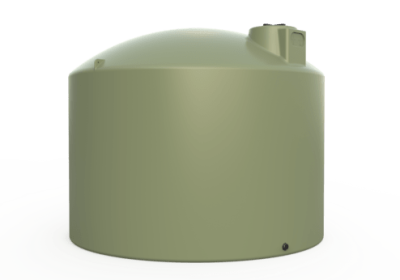The Future of Insulation: New Technologies Adapting to New Zealand’s Environment
When it comes to battling the elements and creating comfortable living spaces, insulation is a homeowner’s best friend. In a country like New Zealand, where climate conditions can range from mild to extreme, the importance of effective insulation cannot be overstated. Fortunately, the future of insulation is looking brighter than ever, with new technologies and materials emerging to adapt to New Zealand’s unique environmental challenges. In this opinion piece, we’ll explore the current state of insulation in New Zealand, the pressing need for innovation, and how these new technologies are shaping the future of insulation in this beautiful, but demanding, environment.

Why is Insulation Crucial in New Zealand?
Before delving into the future of insulation, let’s understand why it’s so critical in New Zealand. This picturesque nation is known for its diverse climate zones, which range from subtropical in the north to subpolar in the south. This variability means that insulation isn’t just about keeping your home warm in winter; it’s about creating a comfortable and energy-efficient environment year-round.
Statistics from the New Zealand government show that around 600,000 homes in the country are inadequately insulated. This leaves many households vulnerable to cold, damp conditions and higher energy bills. In fact, according to EECA (Energy Efficiency and Conservation Authority), improving insulation can reduce energy consumption for heating by up to 50 percent in some cases. Moreover, insulation plays a crucial role in reducing greenhouse gas emissions by making homes more energy-efficient.
The State of Traditional Insulation Materials
Traditionally, New Zealand homes have been insulated using materials like fiberglass, polyester, and even natural materials like wool. While these materials are effective to some extent, they have their limitations.
Fiberglass, for example, is widely used but can pose health risks when mishandled during installation or renovations. Polyester, while less hazardous, might not provide the level of insulation needed for extreme cold or hot climates. Natural materials like wool are renewable and sustainable but can be expensive.
Moreover, these traditional insulation materials have struggled to keep up with the changing environmental dynamics and the growing demand for energy efficiency. This is where new technologies come into play.
Smart Insulation: The Next Frontier
The future of insulation in New Zealand is undeniably tied to smart technologies. These innovations go beyond simply providing a physical barrier between your home and the outside world. Instead, they integrate cutting-edge features that enhance both comfort and energy efficiency.
Insulation with Built-in Climate Control
Imagine insulation that adapts to the climate outside, automatically adjusting its properties to keep your home comfortable. This may sound like science fiction, but it’s closer to reality than you might think. Smart insulation materials can incorporate sensors and actuators that respond to temperature changes and humidity levels. When it’s cold outside, the insulation can increase its R-value (a measure of thermal resistance) to keep your home warm. Conversely, in hot weather, it can become more breathable to dissipate excess heat.
Such innovations not only make your home more comfortable but also significantly reduce heating and cooling costs. The potential energy savings are enormous, contributing to both your wallet and New Zealand’s efforts to reduce greenhouse gas emissions.
The Role of Nanotechnology in Insulation
One of the most promising developments in insulation technology is the integration of nanomaterials. Nanotechnology involves manipulating materials at the nanoscale, which often results in remarkable improvements in performance.
Nanomaterials can be used to enhance traditional insulation materials. For example, adding nanoparticles to fiberglass insulation can improve its thermal conductivity, making it more efficient at trapping heat. This means you can achieve the same level of insulation with less material, reducing costs and environmental impact.
Additionally, nanotechnology allows for the creation of super-thin insulation materials that are highly effective. These thin materials can be applied to walls, ceilings, and floors without taking up valuable living space. They’re also easier to install, making home renovations more accessible and affordable.
Insulation as Energy Generators
Another exciting avenue for the future of insulation in New Zealand is the development of insulation materials that can generate energy. Solar-embedded insulation panels, for example, can harness sunlight and convert it into electricity, reducing your reliance on the grid and lowering your energy bills. In a country like New Zealand, with abundant sunshine in many regions, this technology holds tremendous potential.
Addressing Moisture and Mold Issues
New Zealand’s climate is not only characterized by temperature variations but also high humidity levels in certain regions. Traditional insulation materials can struggle with moisture, leading to mold growth and health issues for residents.
Future insulation technologies are addressing this problem head-on. Moisture-resistant smart insulation materials can detect and manage humidity levels, preventing mold formation. This not only ensures a healthier living environment but also extends the lifespan of your home.
Government Initiatives and Incentives
To encourage the adoption of these innovative insulation technologies, the New Zealand government has introduced various initiatives and incentives. These include subsidies for retrofitting insulation in existing homes and stricter building codes for new constructions. The goal is to improve the energy efficiency of New Zealand’s housing stock and reduce carbon emissions.
The Need for Education and Awareness
While the future of insulation in New Zealand holds great promise, it’s essential to recognize that these new technologies and materials may not be well-known to the average homeowner. Raising awareness and providing education on the benefits and options available is crucial.
Homeowners should be encouraged to seek out professional advice and assessments of their insulation needs. Experts can help homeowners choose the right insulation solutions tailored to their specific climate zone and home design. Moreover, understanding the long-term cost savings and environmental benefits of advanced insulation can motivate more people to make the switch.
Challenges and Obstacles
Despite the clear advantages of advanced insulation technologies, there are challenges and obstacles that must be addressed. One of the primary challenges is the cost of these innovations. While they offer long-term savings, the initial investment can be a barrier for some homeowners.
To overcome this, the government and industry stakeholders should continue to work together to make these technologies more affordable and accessible. Subsidies, tax incentives, and financing options can help bridge the gap between the upfront cost and the long-term benefits.
Another challenge is ensuring that these advanced insulation materials and technologies are installed correctly. Even the most sophisticated insulation won’t perform as intended if not installed properly. Therefore, training and certification programs for installers are essential to ensure that homeowners get the full benefits of these innovations.
The Global Context
New Zealand is not alone in its pursuit of advanced insulation technologies. Around the world, countries are recognizing the importance of energy-efficient homes and reducing greenhouse gas emissions. This global movement toward greener construction practices and sustainable living is driving innovation in the insulation industry.
By staying connected with international developments and sharing knowledge and best practices, New Zealand can continue to benefit from the latest advancements in insulation technology. Collaborations and partnerships with other nations can help accelerate the adoption of these innovations at home.
Your Role in Shaping the Future
As a homeowner in New Zealand, you play a vital role in shaping the future of insulation. Your choices not only impact your own comfort and energy bills but also contribute to the broader environmental goals of the nation. Here are some steps you can take:
- Educate Yourself: Learn about the latest insulation technologies and their benefits. Understand the different options available for your home.
- Consult Professionals: Seek advice from insulation experts who can assess your home’s specific needs and recommend the most suitable solutions.
- Advocate for Change: Encourage your local community and policymakers to support initiatives that promote energy efficiency and sustainable living.
- Invest Wisely: Consider the long-term savings and environmental impact when making decisions about insulation in your home. While advanced technologies may have a higher upfront cost, they often pay for themselves over time.
Embracing a Sustainable Future
In closing, the future of insulation in New Zealand is bright and promising. New technologies are revolutionizing the way we think about insulation, offering innovative solutions to address the unique challenges posed by the country’s diverse climate.
By embracing these advancements and making informed choices as homeowners, we can create more comfortable, energy-efficient, and sustainable living spaces. The benefits are not only financial but also environmental, contributing to New Zealand’s commitment to reducing carbon emissions and mitigating climate change.
As you contemplate your next home improvement project or consider the insulation in your current residence, remember that you have the power to shape the future. By investing in advanced insulation technologies, you’re not only enhancing your own quality of life but also leaving a positive legacy for future generations to enjoy in this stunning corner of the world.
Sources:




![The Dog Podcast Uncovers Startling Truths About What We Feed Our Dogs [Press Release]](https://yourtechnicalhub.com.au/wp-content/uploads/2024/08/dog-food-400x280.jpg)


![The Dog Podcast Uncovers Startling Truths About What We Feed Our Dogs [Press Release] The Dog Podcast Uncovers Startling Truths About What We Feed Our Dogs [Press Release]](https://yourtechnicalhub.com.au/wp-content/uploads/2024/08/dog-food-75x60.jpg)